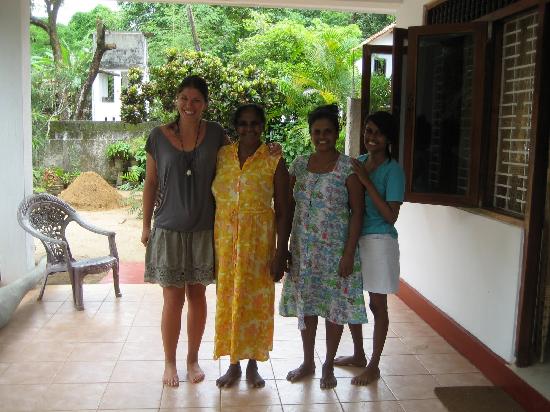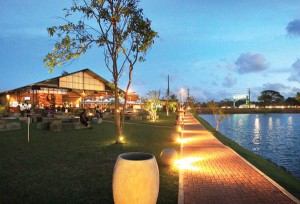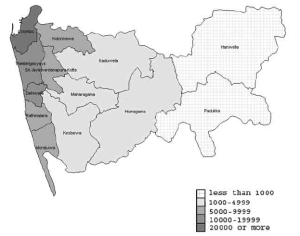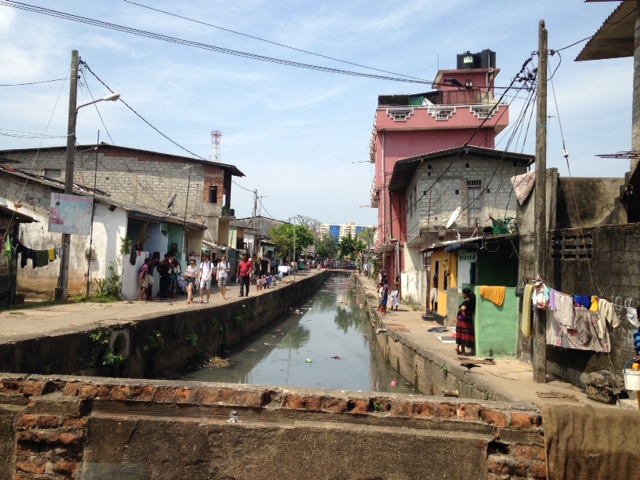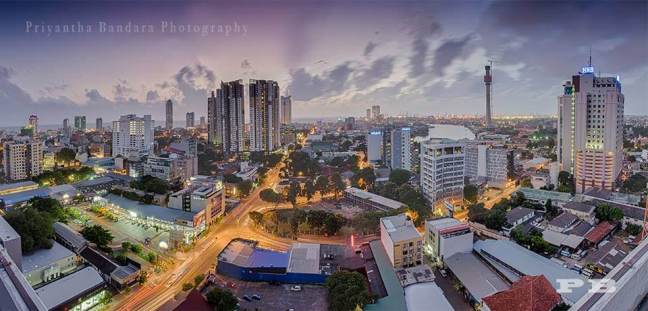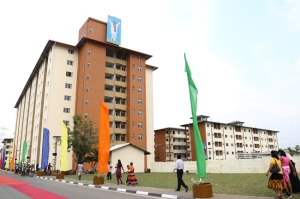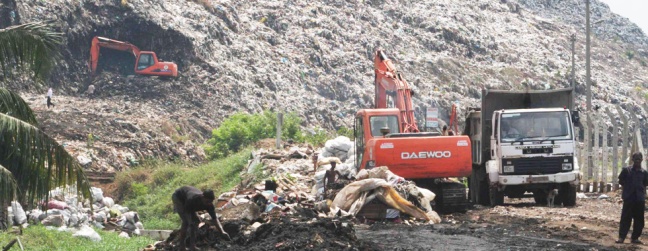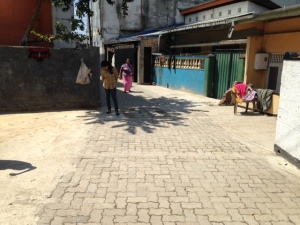Wherever you look around the Indian Ocean basin, Chinese influence is spreading. Traditionally India has dominated the region economically, and politically. But it has lost ground as China has developed its Maritime Silk Road project.
Central to the project is the development of the so called “String of Pearls”. The “pearls” are deep water ports largely financed and built by state backed Chinese companies. They are located around the edge of the Indian Ocean; in Malaysia, Myanmar, Bangladesh, Sri Lanka, the Maldives, Pakistan, the Sudan and Kenya. See below
Port Developments in the Indian Ocean Basin
There are three questions to ask
- What level of control do the Chinese have over these sites?
- How did they get that control?
- Why do they want control?
Let’s take the third question first; Why?
The Indian Ocean has real strategic importance for many countries now but especially for India, and increasingly China. Consider the following:
- The major trade routes which traverse the Indian Ocean are the primary link between South East Asia and Europe the Middle East and Africa
- Nearly half of global containerised traffic and one third of bulk cargo passes through the region
- more than 80 percent of the world’s seaborne trade in oil transits through Indian Ocean choke points, with 40 percent passing through the Strait of Hormuz, 35 percent through the Strait of Malacca
- The Indian Ocean is rich in natural resources; 40% of global offshore oil production happens here as well as significant mineral deposits on the sea bed. For example, manganese, copper, iron, zinc, silver, and gold present in sizeable quantities on the sea bed.
Strategic importance for who?
For India, the Indian Ocean is India’s “back yard” and almost 80% of its oil imports arrive via the IO. For a rapidly expanding economy guaranteed oil supply is a “must”.
Then, there is China. The reason is the same. To fuel its economic growth needs guaranteed oil supplies most of which come across the IO and through the straits of Malacca. In addition, China has a sizeable merchant fleet (over 4000 vessels) to protect.
Let’s not forget the USA, and Europe. The European Union has major trading links with the countries of South and East Asia via the IO.
The USA views the IO as a region of interest. Its foreign policy goals are as follows;
- Ensuring that US objectives are not jeopardised by states such as China and Iran.
- Preventing new or established extremist groups from harming the interests of the US or allied Indian Ocean littoral states.
- Ensuring that US policy is supported by a network of diplomatic relations with which to secure trade relations, military co-operation and influence.
- Ensuring continued access to markets, energy supplies and raw materials.
- Ensuring the security of maritime chokepoints and sea lines of communication (SLOCs).
So, the IO is becoming a focus for competition for influence and possibly dominance between the 4 main blocs. It might be assumed that India would be leading the way, but that is not the case.
It is China that is making the most headway through the expansion of its Maritime Silk Road and its String of Pearls.
What do the Chinese want to control? What level of control do they already have?
The simple answer is that they want to protect their trade routes, guarantee their oil supplies and enhance their trading potential in the South Asia region; that they are looking to open up markets for Chinese goods and services in the region. To that effect they are well on the way via state sponsored industrial consortiums to becoming significant sources of foreign direct investment (FDI) in the region. Indeed, Chinese sources claim such FDI in a range of expensive infrastructure projects represents a win-win for both the Chinese and the host countries.
Others see a more sinister motive; the extension of Chinese military (especially naval) influence and power in the region.
We have already seen how, in Sri Lanka, the Chinese have taken control of Hambantota port on a 99 year lease, when the Sri Lankan government found itself unable to meet debt repayments to Chinese companies and the Chinese government (and more on this later).
To analyse the situation further I looked at what is already happening, or slated to happen in and around the Indian Ocean and you can see the result in the table below;
| Port and Country | Commercial Developments | Military Developments | Comment |
| Doroleh Djibouti | Terminals for grain oil and fertiliser
Rail link to Ethiopia |
Naval support base Military logistics centre with 400 personnel Air Strip Exclusive Berth for warships | Djibouti; ! million population
Chinese troops involved in military exercises |
| Gwadr Pakistan
|
3 deep water berths, industrial zone, transport infrastructure, hospitals, water treatment plant | Chinese naval facility close to Gwadr is planned; supply and logistics centre, access for Chinese naval vessels | |
| Hambantota and Colombo; Sri Lanka | Bunkering, planned industrial zones, expansion of container facilities | No obvious developments planned but planned “visits” by Chinese naval vessels | 99 year lease; effectively Hambantota port is a Chinese enclave |
| Duqm Oman | Oiu refineries, car assembly, pipeline equipment | No information availble | Sino Oman City; massive investment |
| Chittagong and Sonadia Island Bangladesh | Extension of deep-water port and industrial facilities | Planned base for newly purchased submarines (from China) potential for Chinese Submarine base | China is a major supplier of military hardware to Bangladesh; regular joint military exercises in Bangladesh |
| Kyaukpyu Myanmar | Deep water port oiul terminal and industrial zone | No information available | Developments scaled back by government amid fears of growing debt burden, loss of control of port (hambantota for example) and negative public opinion |
| Kuantan Malaysia | Modernisation and expansion of deep-water port and major industrial expansion; steel aluminium, engineering, electronics, oil and gas refineries | None planned | Aimed at economic development of east coast of Malaysian peninsula |
In the central and western parts of the Indian Ocean basin the Chinese already have a significant naval presence and its military influence is likely to grow. We wait to see whether the same becomes true for the eastern part of the basin. If it does how will I dic and the USA respond?
How have they gained a foothold in the region?
The countries in the region are struggling to meet the rising aspirations of their populations. They may have signed up to the Sustainable Development Goals but they are a long way from meeting them. Aid and assistance from the “West” has been in short supply, and this is where the Chinese come in with their massive investment in infrastructure projects which they argue will aid development in the recipient countries. A win – win situation, but is it really?
As the old saying goes, that there is no such thing as a free lunch. Whatever, the Chinese and their friends may say, they are not philanthropists. They are looking for major concessions in return for their investments.
Plus, these massive loans come at a cost: (but not to the Chinese)
- High interest rates to be paid on the loans
- Favourable tax concessions to Chinese companies
- The (almost) exclusive use of Chinese personnel on construction projects
- The necessity of using Chinese steel, engineering etc in the construction of these mega projects
- An overall lack of transparency re; contractual arrangements with hints of corruption surrounding them
It is well documented elsewhere especially by critics of the Chinese One Belt One Road policy that they have achieved their current position via the operation of what some term Debt Trap Diplomacy. That is, they have encouraged vulnerable countries like Djibouti, Bangladesh, Pakistan and Sri Lanka to borrow heavily to finance major infrastructure projects which they could ill afford and which, arguably, they didn’t need. Of course, when indebted countries get into difficulties and can’t repay their loans on time then that gives the Chinese additional political and strategic leverage to extract concessions such as military bases built on foreign soil.
When Sri Lanka for example was unable to meet its repayment obligations on the Hambantota port it was forced to cough up the port to the Chinese by way of reparation. Many fear Pakistan with its ambitious Central Economic Belt Program will go the same way. There are already plans to build a naval base close to the port of Gwadr in Pakistan and Djibouti already has Chinese bases located within the country.
How will this play out?
It is possible to argue that China is exploiting the economic vulnerability of many South Asian countries to its own advantage. India and the USA may well complain, and express their concerns However, it is worth questioning whether India, and the USA, in particular, has taken enough of a lead in promoting economic development in the region.
India declined to join the OBOR and failed to endorse it at the Shanghai Co-operation Organisation summit in June 2018. Some feel this was a mistake although there are sound reasons for that, not least the Pakistan Corridor development which takes in part of the disputed territory of Kashmir.
It hosted a meeting of all heads of state in the ASEAN region in January 2018 “to promote maritime security in the region”
The day before that, India announced that it had agreed with Indonesia to increase bilateral defence cooperation through joint exercises, arms deals and high-level visits of officials. This is in addition to India’s recent support for the resurrection of the Quad, an alignment of India, Japan, Australia and the U.S. whose chief goal is to limit Chinese expansion, and India’s more liberal deployment of its naval forces for military exercises on the Pacific side of the Indo-Pacific.
The point is that this has not been enough. Even though India has also been placing increased amounts of FDI within the region it is nowhere near the scale of the Chinese.
And this is the point India is unable and probably unwilling to compete with the Chinese at the level the latter are operating. So where do matters stand? As one commentator puts it
“India’s foreign policy is still passive. Its goals are to make money and thwart Chinese plans, which it can do merely by offering an alternative to China.”
And what about the USA?
The USA seems to be waking up to the fact that China has made significant political and strategic gains in South East Asia. To back it up they have announced that it would invest $113 million in sectors like technology, energy, and infrastructure in the Indo-Pacific, thus offering an alternative to China’s Belt and Road Initiative. However, the question is this: can the USA compete with China?
The USA does have several advantages:
- Many of the countries in the region are close allies of the USA and would look to the USA for security issues.
- There is a distrust of Chinese motives; witness concerns re; debt trap diplomacy
- There is a preference for the USA style of government in comparison with the Chinese model
BUT
- The USA is much further away from the region geographically
- The America First Trump agenda could drive countries towards closer links with China
- The Chinese OBOR model favours geographic integration which benefits all “member: countries
- China’s political influence within the ASEAN group is growing significantly
- China is the ASEAN group’s major trading partner
So we will have to wait to see how the USA reacts. The odds are that China will come out on top and that the Indian Ocean basin will slowly but surely become part of a Chinese sphere of influence.
So what can other players in this game of thrones do?
The key is for the USA and India is to treat the region and its countries with respect. They need to realise that Southeast Asia is not a battleground for superpowers to grab or compete in. Instead the USA and India need to start a two-way dialogue with the ASEAN countries aimed at understanding their development needs and working with the countries rather than seeking to impose “western centric” solutions on them.





